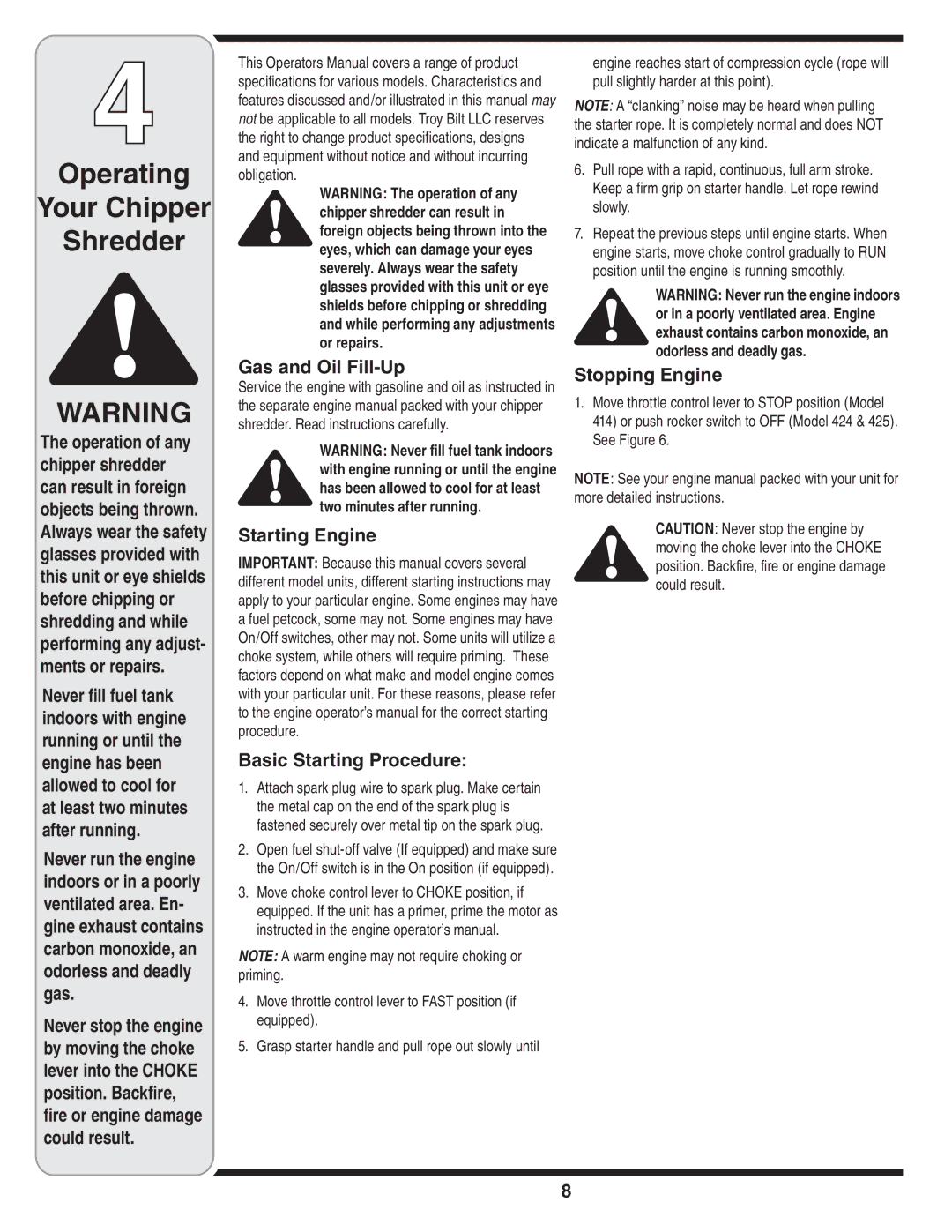410, 420 specifications
The Troy-Bilt 410 and 420 are two impressive tillers that stand out in the market for their durability, performance, and innovative features. Designed for both novice gardeners and seasoned horticulturists, these tillers make soil preparation easier and more efficient.One of the key features of both the Troy-Bilt 410 and 420 is their powerful engines. The 410 model is equipped with a robust 250cc engine, ensuring that it has enough power to handle tough soil conditions. The 420 model takes it a step further with a more powerful 305cc engine, providing increased torque for breaking up hard-packed soil and tilling larger areas. This higher horsepower translates to improved performance, allowing users to tackle even the most challenging gardening tasks with ease.
These tillers are designed with adaptability in mind. The Troy-Bilt 410 features a 14-inch tilling width, while the 420 offers a wider 16-inch tilling width. This means users can select the model that best fits their gardening needs, whether they are working with small garden beds or larger plots. The adjustable tilling depth feature allows users to cultivate the soil at varying depths, promoting better seed germination and healthier plant growth.
Another standout characteristic is the patented Forward and Reverse Tilling technology. This feature allows users to quickly switch between forward and reverse tilling directions, making it easier to navigate around tight spaces and flower beds. The counter-rotating tines further enhance performance by helping to break up hard soil clumps and allowing for a finer tilling finish.
User comfort and ease of operation are also prioritized in both models. The Troy-Bilt tillers come with comfortable handles and a lightweight design, making them easy to maneuver. The adjustable handlebars can be personalized for height, ensuring that operators can work without straining their backs.
Furthermore, both the 410 and 420 come with a durable construction, built to withstand rigorous use over the years. The heavy-duty tines are designed to last and provide dependable tilling results through a variety of soil conditions.
In summary, the Troy-Bilt 410 and 420 tillers are exceptional machines that combine powerful engines, innovative technologies, and user-friendly design. Whether preparing gardens for planting or maintaining established plots, these tillers deliver reliable performance and outstanding results, making them a top choice for gardeners of all skill levels.

